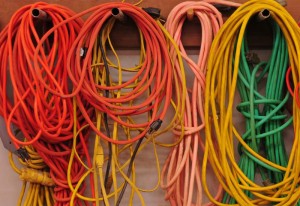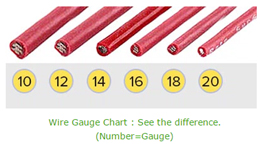 With winter and the holiday season upon us, you’re outlets are probably all filled. You may have even moved to using extension cords to power Christmas trees, lights, inflatable decor, and other extras that come with the holidays and cold weather.
With winter and the holiday season upon us, you’re outlets are probably all filled. You may have even moved to using extension cords to power Christmas trees, lights, inflatable decor, and other extras that come with the holidays and cold weather.
Were you aware the Consumer Product Safety Commission (CPSC) estimates about 3,300 residential fires originate in extension cords every year killing approximately 50 persons and injuring 270 others? Further, there are approximately 4,000 injuries per years relative to electrical extension cords treated in hospital emergency rooms. Therefore, the risk (probability of an untoward result occurring) is significant.
Consumer awareness regarding extension cords is a topic for concern. Most consumers are not aware of the hazards (unsafe physical conditions) relative to extension cords. Information regarding extension cords is not easy to understand and disbursed in various resources.
Consumers should only purchase extension cords that have the “UL” marking. This marking indicates that the extension cord manufacturer has complied with UL Standard 817. Unfortunately numerous extension cords are marketed without meeting the voluntary standard. It was not until August 26, 2015 that the CPSC issued a final rule maintaining extension cords would be deemed a substantial product hazard under the act unless the cords contained certain observable characteristics.
On top of ensuring the cord you purchased is UL compliant:
- Only use indoor extension cords for indoor needs. Select a low gage extension cord made designated for specifically for outdoor use if you are using it in outdoor conditions.
One of the confusing aspects in the selection of an outdoor extension cord is the gage wire rating (wire diameter). It is opposite to what one would think. The smaller the number (i.e. 10, 12,) the thicker the wire. The thicker wire provides less resistance, therefore minimizing overheating.
- Do not use extension cords for heat producing appliances such as coffee pots, toasters, and space heaters. The electrical load from these devices often approaches the circuit capacity and adding cord length increases the chance of overheating.
- Do not concentrate or trap the heat of an extension cord. Coiling an extension cord can concentrate heat. The same is true for placing extension cords under a rug or carpeting. The trapped heat can damage the cord and lead to a fire.
- Only use the necessary length of extension cord for the application. For example, if your Christmas tree lights need a 6-foot cord, do not use a 12-foot cord.
A consumer product that is used every day by millions of Americans has diffuse and confusing information for which it is difficult for consumers to understand. This is another example of why safety engineering must be incorporated into products during the design and manufacture so hazards can be identified and eliminated to the extent reasonably possible. Otherwise, consumers are left on their own to search for piecemeal information about a product.
For more information about household extension cords causing fires, follow this link to a safety alert from the CPSC.

